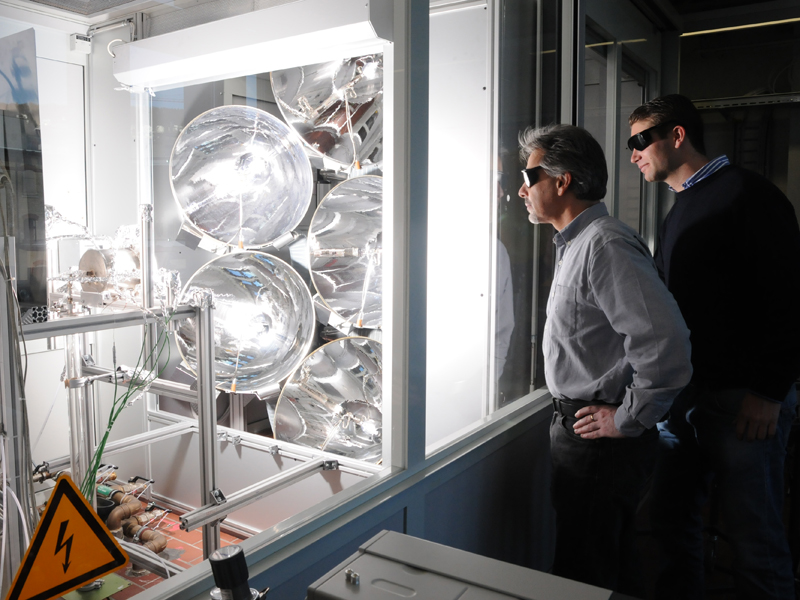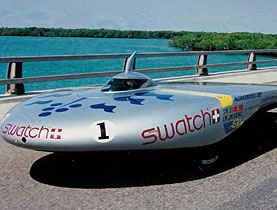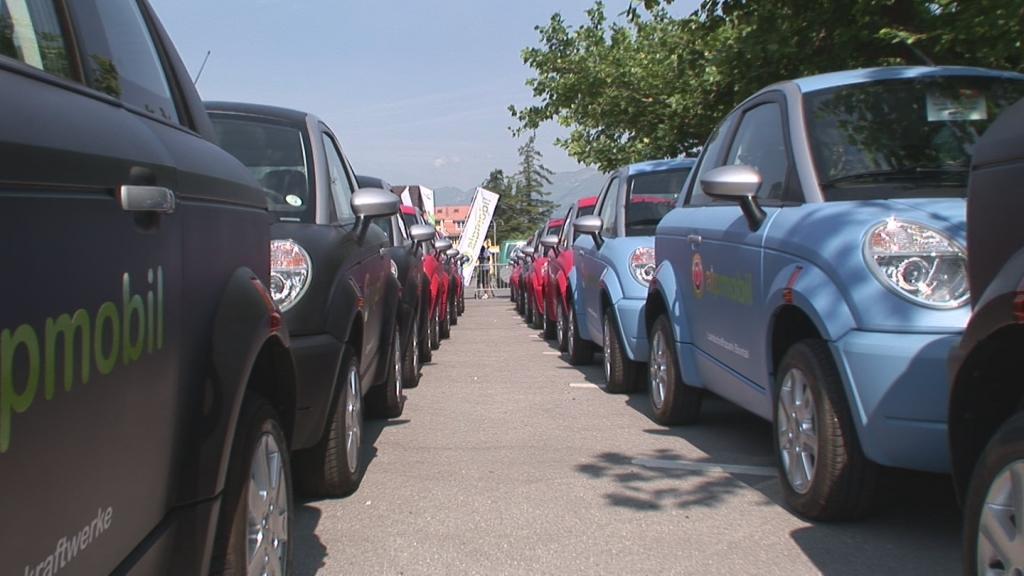Solar fuel invention seeks industrial partner

The breakthrough discovery that environmentally clean car and aircraft fuel can be made using solar power faces the challenge of reaching commercial mass production.
Scientists at two Swiss universities have come up with a new way of making carbon neutral fuel alongside American counterparts. They hope it can become commercially viable by the end of the decade.
The technique involves splitting water and carbon dioxide inside a reactor by concentrating the power of the sun into the thermochemical cycle.
Solar rays are concentrated to a strength of 1,500 suns and directed into a reactor containing a metal oxide called ceria. Water or C02 are then introduced and stripped of their oxygen by the ceria to create hydrogen and carbon monoxide – known as syngas.
The syngas can then be easily turned into liquid fuels for both conventional cars and aircraft. The whole process uses only energy from the sun and vehicles would only emit as much carbon as was originally extracted from the water or CO2 to create the fuel in the first place.
Improve efficiency
The early successful experiments – conducted by teams from Zurich’s Federal Institute of Technology (ETH), the Paul Scherrer Institute in canton Aargau and the California Institute of Technology – have harnessed around 0.8 per cent of the solar energy used in the reaction.
The next goal is to increase efficiency to levels above 15 per cent, according to Aldo Steinfeld, professor of mechanical and process engineering at ETH.
“At the current low rate of efficiency, the fuel we could produce would be much more expensive than conventional fuels,” he told swissinfo.ch. “Who would pay two or three times more to refuel their car with solar gasoline rather than conventional fuel?”
“But once we have reached our higher efficiency target we will be well on our way to commercialisation,” he added.
The commercial mass production of the solar fuel should be feasible by 2020, according to the team. That would involve building plants with solar towers to generate megawatts of solar power compared to the 2,000 watts used in the laboratory experiments.
Commercial hurdles
Such a project would inevitably require input from industry and perhaps even venture capital. But the cleantech sector is littered with good ideas that failed to make it in the commercial world, according to Rolf Hartl from the Swiss Oil Association.
“The problem is that the picture could look very different in the laboratory compared to full scale commercial production,” he told swissinfo.ch. “It is crucial to roll out such projects in the right way.”
Hartl points out that initial excitement about hydrogen replacing fossil fuels 20 years ago has somewhat fallen flat in the face of barriers in the industrial world. “But I would not like to be too negative because solar energy is free and abundant, and that makes this project particularly interesting,” he said.
ETH’s decision not to patent the new discovery has raised some eyebrows as the institution looks at ways of commercialising the idea. ETH opted against patent protection “to enable further research” during the ten years it will take to realise success in the industrial sector.
But Steinfeld is convinced that clean solar fuels will pay off in the near future.
One of the main reasons is that the abundance of free solar power would make the price of this fuel less volatile than the present situation with oil and gas. In addition, the limitless supply of the sun’s energy would also help to maintain price stability.
Steinfeld is also convinced that environmental arguments will have the final say in the future of world energy supplies.
“At some point the price of fossil fuels will have to reflect that they are polluting the environment. We believe that when these external costs are taken into account the price of solar gasoline will be the same or even cheaper than fossil fuel gasoline,” Steinfeld said.
“It will still take a few years, but I am sure this will happen in the future.”
Zurich’s Federal Institute of Technology enjoyed another strong year for spin-off companies as 20 research projects went commercial in 2010.
Some 216 new firms have been created by researchers and staff since the spin-off strategy was started in 1996 – 104 in the last five years alone.
While 2010 fell below the record number of start-ups recorded in 2009 (24), the trend has continued despite the difficult economic conditions.
The spin-offs received SFr760,000 ($784,000) in prize money last year by winning such awards as the Swiss Innovation Prize.
ETH Zurich claims that its spin-off companies have enjoyed a 90 per cent survival rate so far.
The university will host the first ever pan-European prize event for academic spin-off companies this year. The Academic Enterprise Awards event will be held on February 3.

In compliance with the JTI standards
More: SWI swissinfo.ch certified by the Journalism Trust Initiative





You can find an overview of ongoing debates with our journalists here. Please join us!
If you want to start a conversation about a topic raised in this article or want to report factual errors, email us at english@swissinfo.ch.